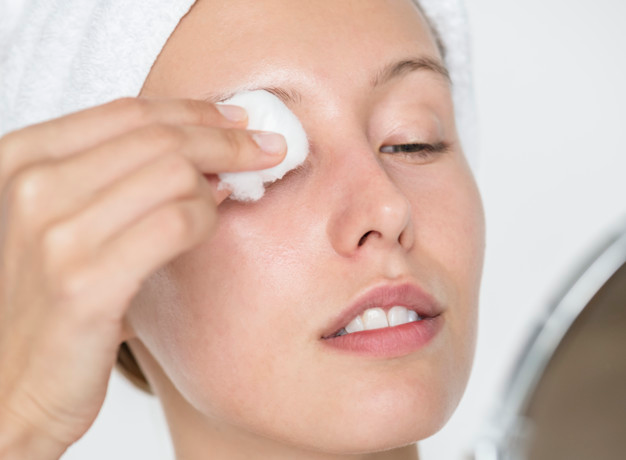Chemical Peel
What is a Chemical Peel?
Chemical peels are treatments that will improve the tone and texture of your skin by removing the damaged outer layers. The chemical peel procedure involves applying a chemical solution to your skin and the solution is allowed to soak in for a few minutes. Over the next one to fourteen days, your skin will exfoliate and you may feel a tingling or the mild sting of a sunburn. Flaking may occur several days following the peel as the damaged skin is freed and new, unblemished skin cells rise to the surface. In some cases, skin peeling may not be visually seen, but the skin exfoliation is occurring on a microscopic level.

How Do Chemical Peels Work?
Chemical peels work by loosening then gently sloughing off the damaged skin cells. Chemical peels differ based on how deeply the chemical penetrates and what type of chemical solution is used. Factors that may affect the depth of a peel include the acid concentration in the peeling agent, the number of coats that are applied, and the amount of time allowed before the acid is neutralized. Deeper peels result in more dramatic effects but are accompanied by higher risks such as increased discomfort and a longer healing time.

What Do Chemical Peels Treat?
Chemical peels provide not only a fresh look, they rejuvenate your appearance as the replacement skin is strengthened by new collagen and elastin. Chemical peels are known by many different names such as skin peels, facial peels, fruit acid skin peels, AHA Peels, chemical resurfacing, and enzyme peels. When used properly, chemical peels are suitable for all skin types. Chemical peels produce controlled injury to the skin, which promotes the growth of new skin cell regeneration giving you a dramatically improved appearance.
In summary, the deeper the peel the longer the recovery. A superficial peel produces redness similar to mild sunburn while medium or deep peels can make the skin look severely burned. Following any chemical peel, it is important to treat your skin gently and avoid sun exposure because the renewed skin will be tender and susceptible to injury. Following a chemical peel, your skin will be tighter, smoother, and look more youthful.
What Types of Chemical Peels We Use?
Glycolic acid is a type of alpha hydroxy acid (AHA) commonly found in sugar cane. Alpha hydroxy acids also occur naturally in certain fruits and foods. Of all the AHA’s glycolic acid is extraordinary for skin rejuvenation because it has the smallest molecular size. This characteristic allows it to penetrate the outer layer of the skin to a greater extent than any other alpha hydroxy acid. Glycolic acid helps to stimulate the formation of new collagen which improves the appearance of wrinkles on the surface of the skin. It’s small molecular size allows it to slip beneath the epidermis, to reach the collagen fibers below and results in 15%-25% thickening over 12 weeks. Glycolic acid has been proven to be very effective in the treatment of hyperpigmentation, melasma, actinic keratosis, acne and oily skin as well as other skin conditions.
Salicylic acid is a beta hydroxy acid (BHA) that is found in willow tree extracts. Salicylic acid is especially effective in treating acne and pigmentary disorders. It is lipophilic (fat-loving) and can penetrate deep into fatty oil glands and skin pores to clean out blemishes.
Trichloroacetic acid (TCA) is a versatile treatment that can be used to improve the appearance of fine lines, wrinkles, acne, acne scars, and pigmentation. The concentration of the TCA can be varied to safely treat all skin types and many skin conditions. A special application of highly concentrated TCA is the treatment of ice pick acne scars using a technique called TCA cross. Drops of 90-100% TCA are applied directly into the acne scars. This causes intense collagen formation. This reaction can often close and raise up the acne scar. Another application of TCA is the treatment of sun damage and actinic keratosis. TCA peels can remove the top sun damaged skin and reveal the healthier skin underneath. This technique can be used to remove and prevent actinic keratosis (pre-cancers), as well as early skin cancers. Aside from these medical benefits, TCA peels also treat the sun damage that look like dark spots, fine lines, wrinkles, and thickened skin. Overall, the skin looks cleaner and healthier.
Can I go out into the sun after having a Chemical Peel?
Sun exposure is never recommended! Sunscreen must be worn after the peel as your skin will likely be a little more sensitive to sun exposure. Sunscreen with a broad-spectrum SPF of 30 or higher is necessary if you are going to be outdoors. For optimal protection, add a broad brimmed hat.
How many Chemicals Peels should I have and how often is it recommended?
For the milder peels, most clients do six peels, 3-4 weeks apart and then maintain the skin by having a peel performed every four to eight weeks. Deeper peels are done less frequently.
Is there anything else that I should know?
Please stop all topical medications for two days before your peel. Plan your waxing appointments at least seven days after your peel. Be sure to inform us if you are pregnant, breast feeding, have a history of cold sores or any significant health issues. Please discontinue use of your skin brushes and scrubs the day of your treatment. If you have an active cold sore, please reschedule your appointment.

